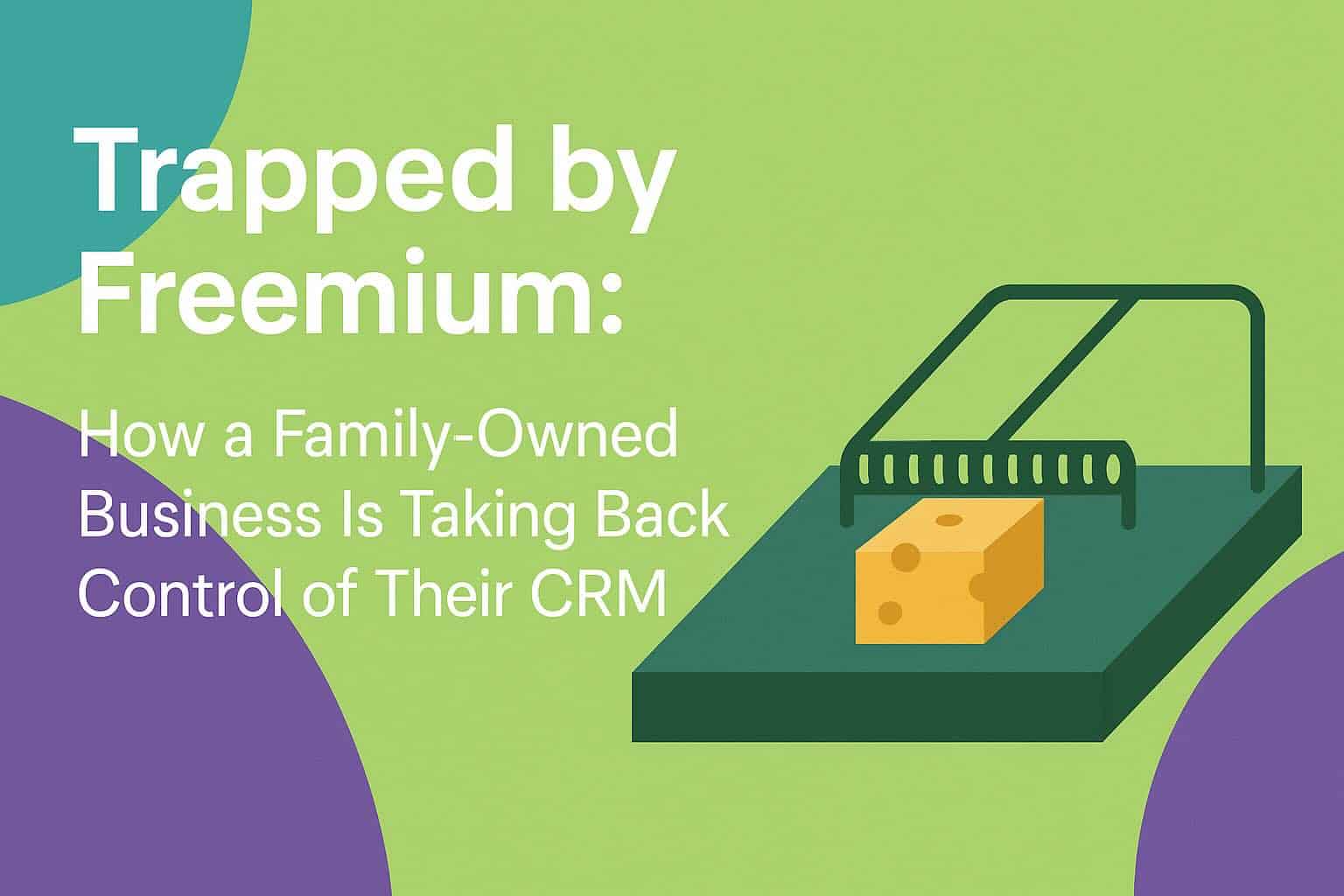Do you have a CRM that’s basically an overgrown Rolodex?
Maybe you installed the product thinking it would help you capture customer data and manage your sales process, but it turned out to be a complicated system that your team never really adopted.
When the CRM is free, it’s easy to let it limp along for years. It might quietly collect email addresses and log communications, but when the price suddenly changes, you realise you’re not getting value, and you hesitate to invest more.
This is exactly what a client of mine experienced.
They’re a fantastic family-owned business that’s been selling a great product to B2B clients for decades. Their hard-working and capable team were just a little frustrated with their CRM.
The CRM had been collecting email addresses and emails for years, but provided almost no real support for their sales process. Critical data like leads, opportunities, and the list of current and past customers wasn’t up to date or even being used.
The challenge
When the “free” product was no longer going to be free, it was time to reassess. That’s where I came in: helping the team get clear on what they had, but more importantly, what they needed — what information and tools would actually help them serve their customers better.
It turns out the “massive Rolodex” had some useful things in it, but so much outdated or irrelevant data that starting fresh wasn’t as scary as they feared.
We compared options at different price points and with different functions — a useful but potentially overwhelming exercise for anyone who hasn’t done it before. Having someone independent to do that work (and who isn’t trying to sell you a product) makes a big difference.
Where’s the value?
Some of the things we identified that would make any CRM investment worthwhile:
- Linking to the right information: Especially invoices from the finance system, a golden way to identify who’s a current customer and who bought some time ago and might be ready for an upgrade.
- Constructing a real pipeline: And embedding the processes for using (and updating) it, so they can finally get reliable sales forecasts.
- Connecting marketing and sales: Creating a cost-effective solution where the sales team can see what marketing content leads have received and how they’re responding.
So what’s the right move? Rework the current system or start fresh with a simpler, more affordable option?
Working through these options with someone independent makes all the difference. It’s not just about licence costs, there’s the cost of change itself: migrating data (and potentially losing some), getting implementation right (including finding the right partner), and most importantly, choosing a system the team wants to use.
Trying out each option with a free trial helps too: “vibes” matter. Even the best functionality in the world is useless if your team resents the software or won’t engage with it.
Right now, this business is still in that messy decision phase. But already, they’re seeing the benefits of pausing to think strategically about their customers and processes before spending a single dollar on new licence fees.
Lessons for everyone
1️⃣ Beware of “freemium”: It’s easy to underestimate the future costs, and easy to underutilise a tool when it feels like it’s free — all while accumulating data you might one day feel trapped by.
2️⃣ Focus on value: Whatever tool you choose, ask: How will this help us serve customers better or make life easier for our team?
3️⃣ It’s not just about the tool: Even the right CRM needs the right processes, capabilities, and team adoption. Think about your team’s preferences too. Will they feel comfortable using it? Will it feel familiar and accessible?
What would you do?
What would you do in this situation?
Would you invest time and effort to get more value from the current system, or would you take the opportunity to start fresh?
If you’re facing a similar question, check out my free “Should I Stay or Should I Go” worksheet, or book a call and we can work through the decision together.

